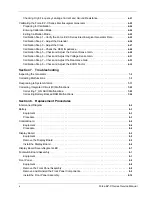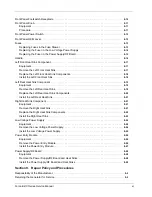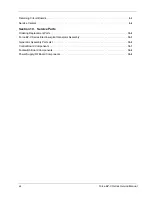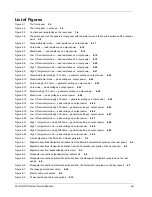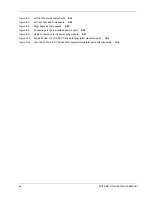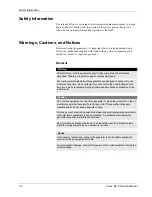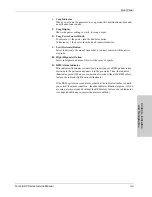
REM Contact Quality Monitoring System
2-4
Force EZ-C Series Service Manual
Coag Modes
Two coagulation modes help control the size of the area and the depth of
penetration during tissue coagulation. The low (desiccate) mode has three
settings; the high (fulgurate) mode, two settings. You can select, as default
settings, one low setting and one high setting. For a description of each setting,
refer to
Special Features
in this section.
•
Low
(
desiccate
) dehydrates and destroys tissue without sparking or cutting.
Because the active electrode directly touches the tissue, more current reaches
the patient. Desiccation places the greatest demand on the patient return
electrode.
•
High
(
fulgurate
) coagulates tissue by sparking from the active electrode,
through air, to the patient tissue. In this mode, you have less control over
sparking, thus it is best suited for coagulation of larger areas. Accidental
sparking to adjacent areas can occur as tissue at the surgical site dries and
becomes more resistant to current flow.
For details about the monopolar output characteristics, refer to Section 4,
Technical
Specifications
.
REM Contact Quality Monitoring System
During monopolar electrosurgery, a patient return electrode is always required to
safely recover the current that flows through the patient’s body and return it to the
generator. A reduction in surface area contact or poor conductivity between the
patient and the return electrode can cause the current to become concentrated,
potentially resulting in burns at the return electrode site.
The Force EZ-C Series Electrosurgical Generator uses the Valleylab REM
Contact Quality Monitoring System to monitor the quality of electrical contact
between the patient return electrode and the patient. The REM system is designed
to eliminate the risk of burns at the return electrode site. Use of any return
electrode other than a REM patient return electrode may compromise the REM
safety feature. This could result in a patient burn.

